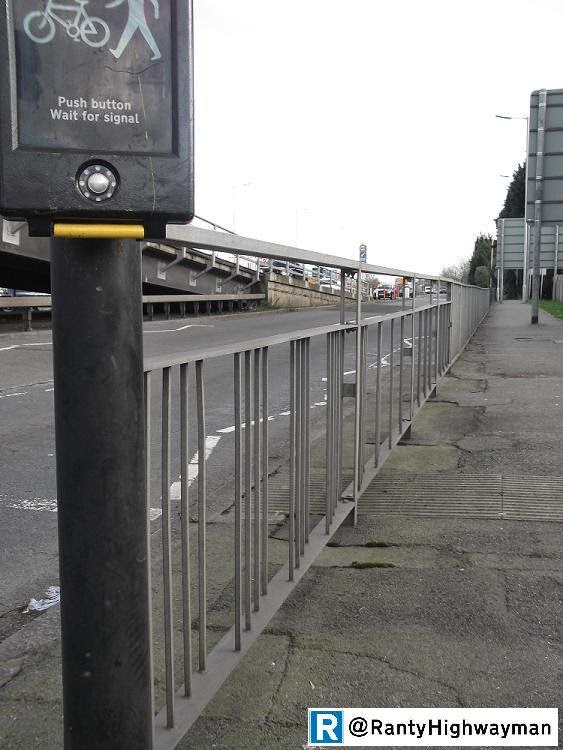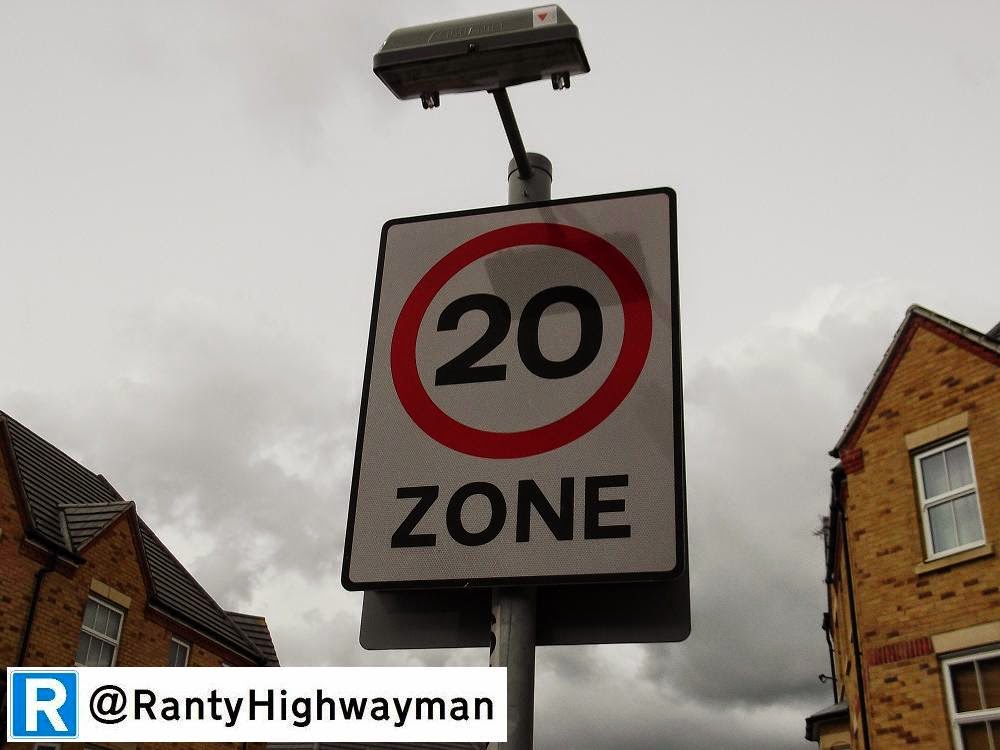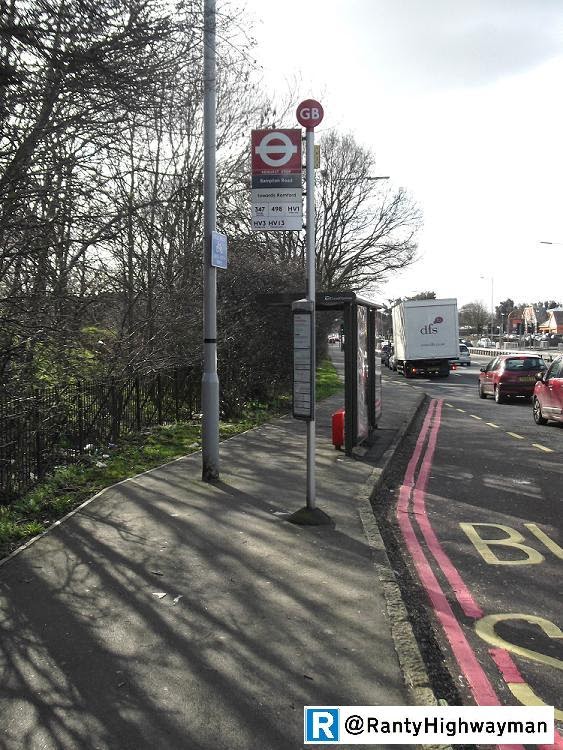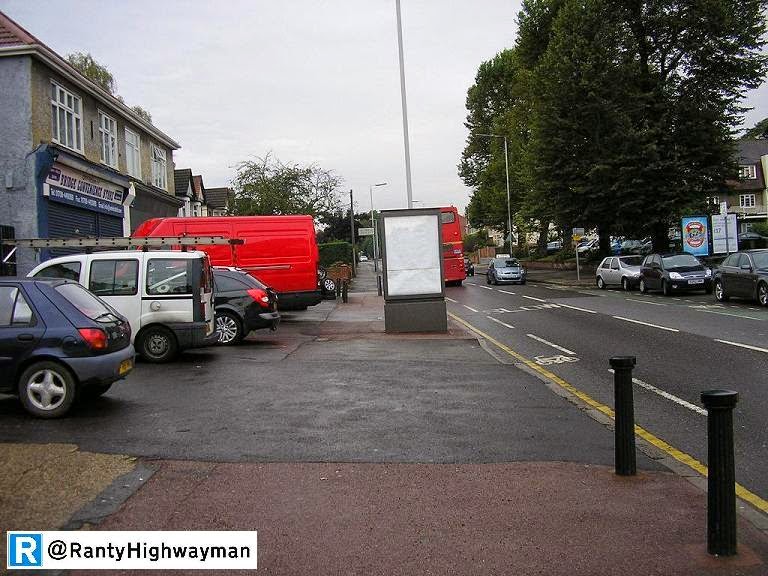I am going to recount a recent conversation I had about traffic congestion. It left me utterly astounded, but on reflection, not that surprised.
In common with most people working in local government, our contract of employment has a catch all which basically states "and undertake other duties from time to time as I may be reasonably required."
This doesn't mean that I have to wash the mayor's car or sweep the Chief Executive's car park space. Despite being an engineer, it essentially means that I don't do enough engineering, but too much dealing with the public (joke!). Most MOPs (Members of the Public) are reasonable and rational people, it is just that I do come into contact with unrepresentative proportion of utterly unreasonable, ill-informed, needy and self-centred fools. And that's coming from me.
There are colleagues who have a far more difficult job than me in dealing with the MOPs such as colleagues in social care or enforcement. Wherever vulnerable people are being helped or protected, then those guys are OK by me. In my area of work, I have to politely and objectively deal with people who, when all is said and done, probably need to have someone scream back at them at the top of their voice so they might have a glimmer of realisation that they are in fact talking cobblers.
There are two types of complainer. First, we have those who have been inconvenienced in some way or have a genuine concern about safety in their community. The response they get may explain why the road is being dug up or why we can't afford to traffic calm their street, but even if they don't agree with the answer, they accept it and hopefully go on their way with a reasonable view of how their complaint was dealt with. Then we have the others. These other people will not accept any answer which doesn't accord with their world view. They often use a scatter-gun approach to complaints, drawing as many people as possible into their web of dissatisfaction and won't rest until they get the answer they want.
So, this person. From the "other" group. They called our office to start with to complain about the amount of roadworks going on in the area. Yes, I work in a highways office and so it would be reasonable to expect the odd moan about the roads being dug up. In this case, the ire of their issue was a bit of our work and a bit of the power company's work. The call was taken by one of our streetworks officers who is often the person of choice because it is streetworks! The person was very concerned about the amount of roadworks disrupting their journey to work and wanted to know what we were going to do about it.
My colleague explained that in the need to maintain the highway network and utilities, it is inevitable that the roads would be dug up, but that we did coordinate the works within the framework provided by legislation, but from time to time, yes, journeys would be affected. The answer was not satisfactory and the person started adding other non-roadwork traffic issues. My colleague took the details and said someone would call back in due course. Over to me then. Actually, we are in an open plan office and we talk to each other, so I was fully briefed before I made the call.
It all started quite politely with the person recapping their concerns about roadworks. The person couldn't understand why "our" job was taking so long and so I tried to explain what was involved (it is a scheme which is completely reconstructing footways and strengthening a carriageway - it take a while you know). The person felt we should be working more quickly because it was affecting their drive to the station. Hang on. Drive to the station? I fired up Google Maps.
They went on to explain that they often used a busy signalised junction, but "it" caused traffic to queue up and that "we" should rephase the lights. The person then went on to say that there was also another junction nearby which was always snarled up and blocked the first junction they mentioned. I gave my traffic signal pie description. You know the one - for any given junction size, there is a corresponding size of pie and we need to give everyone a slice. If we give you, the person concerned about sitting in a traffic jam a bigger slice, then there is less to go round. Need a bigger slice? Well you need a bigger junction which means knocking down some buildings. The person said that they understood, but they hadn't and they were getting frustrated.
I did mention that Transport for London looked after the signals in London and were gradually rolling out SCOOT which (in motorised) traffic terms could optimise the operation of junctions, but of course if traffic grew or switched routes, then it would be a short-lived improvement and it must lead to the inevitable political conclusion that either traffic needs restraining or roads and junctions need to be expanded. I suggested that the later is extremely unlikely in a built up borough where people's homes would be knocked down for the space (although this was done in the 60's and 70's of course).
As as I mentioned "politics", my customer the enlightened me about all of the recent poor planning decisions made in the area which had further snarled up their journey to work. A new school and housing developments were a particular issue. I tried to explain that decisions are made at the end of a chain of national, regional and local planning rules and policies and the answer to the complaint was clearly to stop all development in the area. I was then told about the chaos caused by the school run. Actually, I kind of agreed!
I steered the conversion back to the person's main problem and that was driving to the station. I asked if the bus was an option. It wasn't as the buses are stuck in the same traffic jams. I asked if they knew how long the walk would be - they said about 20 to 25 minutes. I said, according to Google, it was 17 minutes and I had found Google journey planning quite good. I was informed in no uncertain terms that walking leaves one sweaty and who wants to get on a train sweaty. I asked if the person was dropping off someone at the station (or being dropped of themselves). This often happens when one person drops off others at the station and drives on to work. Then the bombshell. My customer informed me that they drove to the station and parked nearby (as they had access to a parking space) and then got their train to Central London.
According to Google, the journey is 0.9 miles. 1500 metres of pure horror. Forget the junctions, forget the sweaty walking, forget the developments. This person could not link their congested drive over 1500 metres to the fact that their neighbourhood suffered traffic congestion; that the buses (and all of the passengers) were stuck in traffic because people were choosing to drive stupidly short distances. The conversation ended friendly enough. I was thanked for my time, but because I had no answer to the problem, the person would be taking it further and would be writing to their MP. I wonder if the MP will have any sympathy that this person sits in traffic to drive 0.9 miles or will point out the desperate stupidity at play here. It will probably be the former.
I cannot totally blame my customer for their attitude. They said that they had commuted into Central London for 25 years and so they will have had experience of how busy our urban areas can be. But, over the same period, we have moved to the point where personal choice is everything, where we have been told and seduced into thinking that private motoring is the ultimate expression of freedom, where the streets have been changed to facilitate easy driving. All of this might be fine out on the trunk roads and motorways, but for short urban trips at peak journey times, driving 0.9 miles is positively antisocial. Of course, we need to be sympathetic to our customers if they have a genuine problem, but in this case, they are the problem.
There are colleagues who have a far more difficult job than me in dealing with the MOPs such as colleagues in social care or enforcement. Wherever vulnerable people are being helped or protected, then those guys are OK by me. In my area of work, I have to politely and objectively deal with people who, when all is said and done, probably need to have someone scream back at them at the top of their voice so they might have a glimmer of realisation that they are in fact talking cobblers.
There are two types of complainer. First, we have those who have been inconvenienced in some way or have a genuine concern about safety in their community. The response they get may explain why the road is being dug up or why we can't afford to traffic calm their street, but even if they don't agree with the answer, they accept it and hopefully go on their way with a reasonable view of how their complaint was dealt with. Then we have the others. These other people will not accept any answer which doesn't accord with their world view. They often use a scatter-gun approach to complaints, drawing as many people as possible into their web of dissatisfaction and won't rest until they get the answer they want.
 |
| Yes, when things get like this, they need mending. That is what "roadworks" are. Things aren't changed while you sleep by the asphalt fairies! |
My colleague explained that in the need to maintain the highway network and utilities, it is inevitable that the roads would be dug up, but that we did coordinate the works within the framework provided by legislation, but from time to time, yes, journeys would be affected. The answer was not satisfactory and the person started adding other non-roadwork traffic issues. My colleague took the details and said someone would call back in due course. Over to me then. Actually, we are in an open plan office and we talk to each other, so I was fully briefed before I made the call.
 |
| Yes, on the bus at rush hour! |
They went on to explain that they often used a busy signalised junction, but "it" caused traffic to queue up and that "we" should rephase the lights. The person then went on to say that there was also another junction nearby which was always snarled up and blocked the first junction they mentioned. I gave my traffic signal pie description. You know the one - for any given junction size, there is a corresponding size of pie and we need to give everyone a slice. If we give you, the person concerned about sitting in a traffic jam a bigger slice, then there is less to go round. Need a bigger slice? Well you need a bigger junction which means knocking down some buildings. The person said that they understood, but they hadn't and they were getting frustrated.
I did mention that Transport for London looked after the signals in London and were gradually rolling out SCOOT which (in motorised) traffic terms could optimise the operation of junctions, but of course if traffic grew or switched routes, then it would be a short-lived improvement and it must lead to the inevitable political conclusion that either traffic needs restraining or roads and junctions need to be expanded. I suggested that the later is extremely unlikely in a built up borough where people's homes would be knocked down for the space (although this was done in the 60's and 70's of course).
 |
| Another lane needed here? |
I steered the conversion back to the person's main problem and that was driving to the station. I asked if the bus was an option. It wasn't as the buses are stuck in the same traffic jams. I asked if they knew how long the walk would be - they said about 20 to 25 minutes. I said, according to Google, it was 17 minutes and I had found Google journey planning quite good. I was informed in no uncertain terms that walking leaves one sweaty and who wants to get on a train sweaty. I asked if the person was dropping off someone at the station (or being dropped of themselves). This often happens when one person drops off others at the station and drives on to work. Then the bombshell. My customer informed me that they drove to the station and parked nearby (as they had access to a parking space) and then got their train to Central London.
According to Google, the journey is 0.9 miles. 1500 metres of pure horror. Forget the junctions, forget the sweaty walking, forget the developments. This person could not link their congested drive over 1500 metres to the fact that their neighbourhood suffered traffic congestion; that the buses (and all of the passengers) were stuck in traffic because people were choosing to drive stupidly short distances. The conversation ended friendly enough. I was thanked for my time, but because I had no answer to the problem, the person would be taking it further and would be writing to their MP. I wonder if the MP will have any sympathy that this person sits in traffic to drive 0.9 miles or will point out the desperate stupidity at play here. It will probably be the former.
 |
| Are we having fun yet? |
 |
| If only there was another way to help people make short journeys. |


















.jpg)






.jpg)



.jpg)























